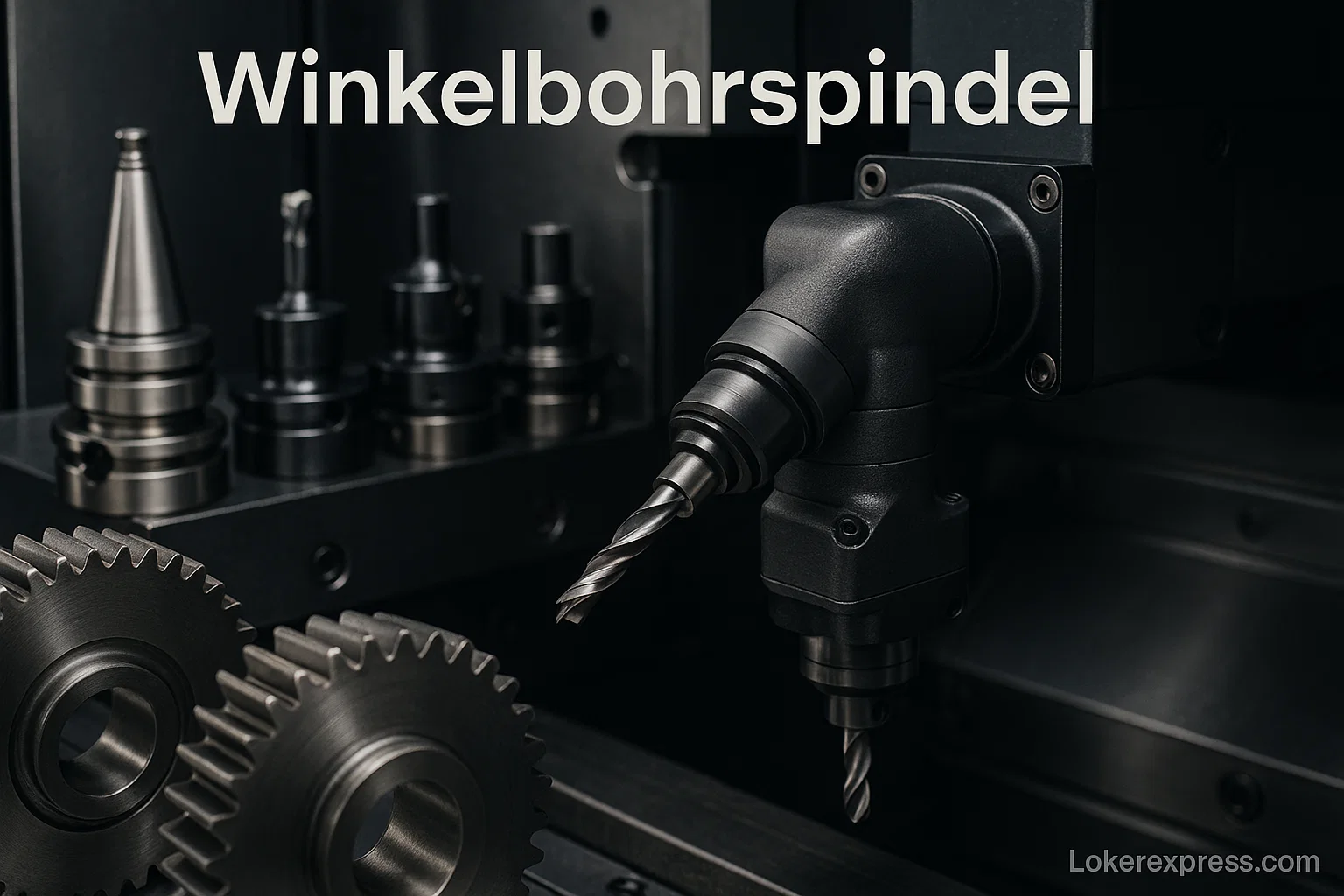Introduction
In the ever-evolving world of manufacturing, precision engineering, and advanced machining, certain specialized tools play a pivotal role in enabling complex operations. One such device is the winkelbohrspindel—a German term for angle drilling spindle. This tool is more than just an accessory; it’s an engineering solution designed for accuracy, flexibility, and performance in environments where conventional drilling approaches cannot succeed.
As we step into 2025, industries ranging from aerospace to woodworking are witnessing increasing demand for compact yet powerful drilling solutions that can reach difficult angles without sacrificing precision. Whether you are a professional machinist, a production engineer, or a DIY enthusiast seeking high-quality tools, understanding the winkelbohrspindel’s design, applications, and advantages is essential. This guide provides a complete overview, covering its technical specifications, use cases, maintenance tips, and emerging innovations.
What Is a Winkelbohrspindel?
A winkelbohrspindel is a mechanical spindle unit designed to allow drilling, milling, or machining operations at an angle—often 90 degrees—relative to the main spindle axis. This capability is invaluable when the workpiece geometry or machine layout prevents direct vertical or horizontal access.
The device typically consists of a housing containing precision-engineered gears that redirect the rotational motion of the input shaft to the output tool holder at a specified angle. High-quality models maintain consistent torque, speed, and accuracy, even under heavy loads or in continuous operation.
These spindles are widely used in CNC machines, special purpose machines, and manual setups where flexibility and precision are critical. In German manufacturing traditions, the term “winkelbohrspindel” encompasses not only the right-angle spindle but also variants designed for adjustable or fixed angle work.
Technical Components and Build Quality
A modern winkelbohrspindel is an assembly of carefully engineered components, each serving a vital role:
- Housing – Made from high-grade aluminum or steel alloys, ensuring strength and thermal stability while keeping weight manageable.
- Gear System – Precision-cut bevel gears or hypoid gears transfer motion efficiently at an angle, minimizing backlash and wear.
- Bearings – High-precision ball or roller bearings support the spindle shaft for smooth rotation and long service life.
- Tool Holder – Compatible with ER collets, hydraulic chucks, or specific mounting sizes like Ø8H7 or Ø10H7, depending on application.
- Drive Interface – Typically belt-driven or direct-drive, capable of speeds up to 13,000 RPM in industrial models.
The build quality of a winkelbohrspindel directly influences its performance. Premium units undergo heat treatment, surface hardening, and rigorous balancing to ensure durability and vibration-free operation.
Industrial Applications of a Winkelbohrspindel
The versatility of the winkelbohrspindel makes it a staple in various industries:
- Metal Fabrication – For drilling, tapping, or milling holes in steel, aluminum, and other metals at precise angles.
- Woodworking – Essential in cabinetry, furniture making, and complex joinery where angled holes are required.
- Aerospace Engineering – Used in producing complex airframe structures with multiple access constraints.
- Automotive Manufacturing – Helps in creating angled boreholes in engine blocks, chassis components, and interior fittings.
- Plastics and Composites – Ideal for delicate materials where direct access is impossible without damaging the workpiece.
By enabling machining in hard-to-reach areas, winkelbohrspindeln improve efficiency, reduce the need for repositioning, and maintain production accuracy.
Advantages of Using a Winkelbohrspindel
Investing in a quality winkelbohrspindel offers numerous benefits:
- Space Efficiency – Perfect for confined spaces where standard drills or end mills cannot fit.
- Precision Drilling – Maintains accurate angles without operator guesswork.
- Versatility – Works with metals, plastics, wood, and composites.
- High Speed and Torque – Many models operate up to 13,000 RPM while delivering strong cutting power.
- Reduced Setup Time – Eliminates the need for repositioning complex workpieces.
- Customization – Available in fixed or adjustable angle variants for specific applications.
These benefits translate to increased productivity, reduced errors, and improved finish quality in manufacturing operations.
Choosing the Right Winkelbohrspindel for Your Needs
When selecting a winkelbohrspindel, consider the following factors:
- Material Compatibility – Ensure the spindle can handle the hardness and density of your workpiece material.
- RPM Range – Higher speeds are needed for smaller tools or softer materials; lower speeds for large cutters or harder metals.
- Mounting Type – Verify compatibility with your machine’s slide, headstock, or CNC mounting points.
- Tool Holder Type – Check collet or chuck compatibility (ER25, ER32, custom).
- Angle Requirements – Decide between fixed-angle and adjustable-angle spindles.
- Build Quality – Look for heat-treated gears, sealed bearings, and sturdy housings for durability.
Purchasing from reputable manufacturers ensures better after-sales support, spare part availability, and consistent quality control.
Maintenance and Longevity Tips
Like any precision tool, a winkelbohrspindel requires regular care to maintain performance:
- Lubrication – Apply the manufacturer-recommended grease or oil to gears and bearings at regular intervals.
- Cleaning – Remove chips, dust, and debris after each use to prevent contamination.
- Belt and Gear Checks – Inspect drive belts for wear and ensure gear teeth remain undamaged.
- Bearing Inspection – Listen for unusual noise or vibration, which can indicate bearing wear.
- Proper Storage – Store in a clean, dry environment to prevent corrosion.
Well-maintained spindles can last many years, offering consistent precision throughout their lifespan.
Future Innovations in Winkelbohrspindel Technology (2025 and Beyond)
As manufacturing embraces automation and smart technology, the winkelbohrspindel is evolving in several ways:
- Integrated Sensors – Monitoring spindle speed, temperature, and load in real time.
- Lightweight Composites – Reducing weight without compromising strength.
- Higher Efficiency Gear Systems – Minimizing energy loss and heat buildup.
- Modular Attachments – Allowing quick tool changes and angle adjustments.
- Industry 4.0 Connectivity – Enabling data tracking for predictive maintenance.
These developments promise even greater efficiency, reduced downtime, and improved quality control in the years ahead.
Conclusion
The winkelbohrspindel remains a cornerstone of modern machining, bridging the gap between accessibility and precision. From intricate woodworking to heavy-duty metal fabrication, its ability to operate in tight spaces at precise angles makes it indispensable.
In 2025, choosing the right winkelbohrspindel means balancing speed, torque, build quality, and compatibility with your specific needs. With proper maintenance and an eye on emerging innovations, this tool will continue to be a valuable asset in industrial and workshop settings alike.

